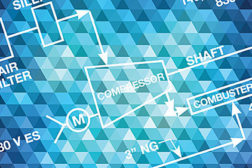Milton Meckler P.E., CPC
Meckler currently serves as president/CEO of Design Build Systems (DBS), headquartered in Los Angeles. Contact him at mmeckler@designsystemsbuild.com.
ARTICLES
Be in the forefront of the mechanical engineering industry!
Join thousands of professionals today. Shouldn’t you know what they know?
JOIN NOW!Copyright ©2024. All Rights Reserved BNP Media.
Design, CMS, Hosting & Web Development :: ePublishing

